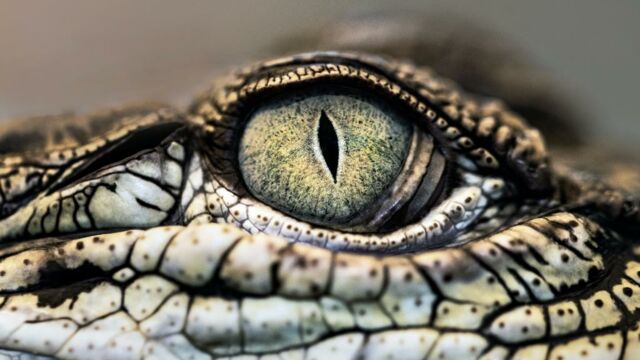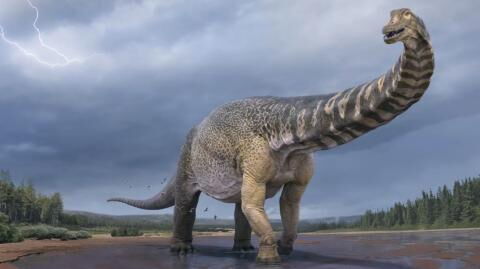A 95 million-year-old crocodile would have consumed a small dinosaur shortly before its own death at the hands of an even larger creature. At least, that's what experts gathered after finding the remains of a reptile fossil in Queensland, Australia.
Discover our latest podcast
A world-first
When palaeontologists stumbled upon a crocodile skeleton, the discovery was already a huge win for the scientific community. But, the experts were in for an even greater surprise. Not only was the reptile of a previously unknown species, but it also contained the remains of a dinosaur in its stomach, states their report. The conclusions were relayed on 10 February by Science Direct.
'This is just extraordinary,' enthused Matt White, an associate at the Australian Age of Dinosaurs, who led the research into the discovery. He continued:
This is the first time a crocodile has been found with dinosaur remains in its stomach. It's a world first.
Matt White and a team of palaeontologists and volunteers discovered the crocodile fossil in 2010, in a geological rock formation called the Winton Formation, which has previously yielded dinosaur bones.
Read more:
⋙ Scientists discover impeccably preserved dinosaur embryo 66 million years on
⋙ Newly discovered gigantic dinosaur with shark-like-teeth was fiercest predator
⋙ Meet Australotitan, the largest dinosaur ever unearthed in Australia
They didn't expect to make this amazing discovery—they were actually looking for sauropod bones (very large herbivorous dinosaurs). They stumbled across the crocodile's remains while scraping away excess dirt from the site. 'The best finds are made when you break something,' said Matt White, noting that the front-end loader, a machine used for excavation, damaged the crocodile fossil.
The two-metre crocodile appears to be a previously unknown species. Researchers have dubbed it Confractosuchus sauroktonos, which means 'dinosaur killer.'
The researchers used X-rays, scans and 3D computer models to examine them more closely. 'The technology we're using breathes new life into what we can see in these fossils,' said the palaeontologist, noting that the technology could help discern the stomach contents of other fossils.
It's going to change the way things are done.
A dinosaur barely bigger than a chicken
He and his team determined that the dinosaur eaten by the crocodile was an ornithopod, a small beaked plant-eater that lived 100 million years ago.
Ornithopods were very cute little dinosaurs, probably a little bigger than a chicken.
The researchers found that the crocodile had 'sheared' one of the ornithopod's femurs in half. The other femur bore the scar of a tooth mark. White explained:
Although Confractosuchus did not specialise in eating dinosaurs, it would not have overlooked an easy meal, such as the young ornithopod remains found in its stomach.
Given the lack of comparable specimens in the world, this prehistoric crocodile and its final meal will continue to provide clues about the relationships and behaviours of animals that inhabited Australia millions of years ago.
What we have been able to demonstrate is direct evidence of [the crocodiles'] food source and that they were able to eat anything that came close enough.
The fossilised remains of this newly discovered crocodile are now on display at the Australian Dinosaur Age Museum for all to see.















